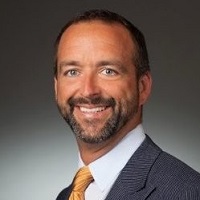 By David Hunt, Founder & President, Cosán Group
By David Hunt, Founder & President, Cosán Group
Twitter: @cosangrp
Social isolation is more than an emotional hardship – it can have chronic and quantifiable effects on overall health, especially for older adults. For adults aged 50 and older, social isolation significantly increases their risk of dementia, heart failure, and even premature death. The pandemic brought with it intense quarantine and stay-at-home-measures, which posed a heightened threat to this population that’s already at a higher risk of loneliness due to late-in-life factors such as living alone, the loss of family and friends, chronic illness, and sensory impairment.
When it comes to battling social isolation and providing high-quality healthcare, there have historically been two courses of action: inpatient care and in-home care. While both options provide social and medical support, neither is preferable for the large population of aging adults who want to age comfortably in their homes.
Inpatient care is expensive and becoming increasingly unpopular, especially because it doesn’t always translate to better health outcomes. According to a study by Johns Hopkins, home health patients experience lower mortality rates, lower use of sedative medication, and lower use of restraints. That said, permanent in-home care is expensive and often unnecessary for adults who don’t need round-the-clock medical care.
Therein lies the power of hybrid care: the clinical care team can monitor vitals, discuss a patient’s concerns with them, and incorporate preventative services remotely (and in person if necessary). By combining dedicated care teams and connected devices as the pillars of care programs, older adults have comprehensive, whole-person care through technology-enabled services. Further, by outsourcing the chronic care management (CCM) program to a third-party organization, practices can further close the gaps in care, ensuring patients can conveniently contact their care team both in-person and remotely, reducing the overall sense of isolation. Remote patient monitoring (RPM) and technology allow for safe home care, but personalized and consistent care makes it desirable.
Care coordinator-driven interactions:
To ensure a hybrid care model effectively engages the patient, interactions must be driven by a dedicated care team. Instead of relying on the patient or their loved ones to reach out with any concerns, remote care coordinators can initiate these conversations, communicating as often or as rarely as the patient likes. Beyond just clinical questions, these coordinators check in to discuss the patient’s overall livelihood. They can glean more information about their diet, even going as far as taking a virtual look into their fridge, and discuss any accessibility challenges, working to install grab bars, benches, or other necessary modifications.
Data-driven interactions:
Beyond this regular communication, care coordinators will be there to connect with patients when they need it the most. With a litany of connected, non-disruptive devices around the home, the clinical team can monitor a patient’s vitals and intervene when they begin to show behaviors that suggest they are managing physical or emotional challenges.
Passive RPM devices consistently compile data and push it to the patient’s health records, effectively keeping their clinicians abreast of any irregularities. Bed sensors, for example, can track sleep quality, heart rate, weight, and other vitals as the adult goes about their day. Further, audio and voice bots can recognize aberrant speech patterns and alert the care team so they can engage in any necessary interventions.
To best engage patients and reduce social isolation, the care coordination strategy must deliver a support network that not only monitors the health of patients on a continuous basis but initiates contact and suggests improvements based on patient data. This goes for both the people and the technology. Hybrid systems are only effective at battling loneliness when they don’t rely on the patient to reach out during all times of need, and the key to fostering proactive, engaging programs are technology-enabled healthcare services. Keeping open channels of communication by connecting care teams with patients in regular intervals and responding in times of emergency thanks to data-driven alerts allows older adults to rest assured knowing they’re far from alone and always have their team of coordinators to turn to.
